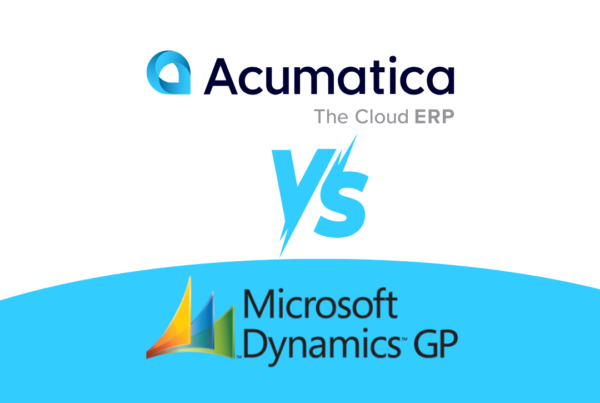Have you ever felt tangled in a web of business software? Think accounting software chatting with supply chain systems, payroll processing dancing with cloud computing—all under one roof. It’s not just wishful thinking; it’s the reality with Enterprise Resource Planning, or ERP. In this post, we’ll unpack ERP systems, trace how they’ve evolved over time, and dig into their crucial parts. I’ll show you how ERP ties your business processes together and the awesome perks of getting it right. Plus, we’ll confront the not-so-fun parts, like risk management during ERP implementation, and share tips to glide through it. If you’re aiming to get your business operations smooth and synced, read on. We’ll help you select an ERP solution that fits like a glove, keeping headaches at bay and setting you up for success.
Key Takeaways
- ERP software connects all business operations for increased efficiency
- Cloud-based ERP solutions enhance collaboration and accessibility
- Customizing ERP systems to fit specific needs is crucial for success
- Real-time data from ERP systems sharpens decision-making and customer service
- Planning and expert help are key for a smooth ERP implementation
Introduction to Enterprise Resource Planning (ERP)
Hey there! Let me give you the scoop on Enterprise Resource Planning, or ERP, as it’s more commonly known. Basically, ERP software helps businesses keep their operations in check—from accounting and manufacturing to human resources. Think of it as the organizational wizard that keeps all the different parts of a company communicating properly. We’ll see how this tech is a game-changer for modern businesses, and take a peek at which industries get the most out of ERP systems. Stick with me, and you’ll see just how vital it is in today’s fast-paced market.
Defining ERP and Its Purpose
So, what’s ERP all about? Well, it’s this super handy enterprise software that links up all the different chunks of a business—like customs, procurement, and management—into one tidy system. It’s all about making sure these parts work together smoothly. Think about ERP as a big brain for your company; it takes in all the info from across your business, applies some clever business intelligence, and helps you make smart decisions. It makes sure no one is ordering too much stuff, the right hand knows what the left hand is doing, and that every section of your business is on the same page. Neat, right?
The Role of ERP in Modern Businesses
Nowadays, ERP plays a huge role for companies looking to stay on top of their game. It’s all about giving every part of your business easy access to the same information. This means your product details, inventory levels, and even customer orders are shared across departments seamlessly. With ERP, it’s like hitting the automation button on your business processes, letting you track a product lifecycle from idea to delivery without breaking a sweat. For me, that’s a big win because it cuts down on the mix-ups and saves loads of time. Plus, I get to see everything that’s happening in my business on one screen—imagine that!
Industries That Benefit From ERP Systems
Alright, let’s chat about which industries really shine when they bring ERP into the mix. First up, manufacturing is a big one—they use ERP for everything from keeping track of their raw materials to managing the assembly line. Then there’s retail; these folks rely on ERP for inventory magic, making sure they’ve got just the right amount of products without having too much. And don’t even get me started on healthcare—hospitals turn to ERP to keep patient records straight and manage their staff. Now, the cool part is that ERP isn’t just for the big leagues; small businesses can get in on the action too, using ERP for project and contract management. Remember this: no matter the size of your business, if you’ve got processes to manage, ERP is like your best friend in the biz.
The Evolution of ERP Systems
So let’s dive into the history of ERP. We started with MRP—just focusing on materials—and now we’ve got ERP systems that handle the whole workflow, including accounts receivable and other essential business software functions. We’ve seen a big shift to cloud-based ERP solutions, which ramps up efficiency big time. Plus, with digital transformation, we’re weaving in the Internet of Things, which means our ERP tools are smarter than ever. Each part we’re going to talk about shows how ERP has grown to make businesses like ours run smoother.
From MRP to ERP: A Brief History
When I first learned about MRP—Material Requirements Planning—it was mainly focused on optimizing inventory and manufacturing processes. But let me tell you, things have seriously levelled up since then. Now, we’ve got ERP systems that are like the Swiss Army knife of the business software world. They’re not just for logistics anymore; they integrate everything from server-based data storage to advanced business intelligence. Plus, they’ve jacked up their game with slick user interfaces and they’ve made friends with the cloud, transforming into Software as a Service. It’s like watching your kid grow up—ERP has matured into a tool that touches every part of your operation, making sure it runs like a well-oiled machine.
The Shift to Cloud-Based ERP Solutions
Let’s chat about this huge shift to cloud-based ERP solutions. Cloud ERP is like having a secret weapon for your business. It gives you a single source of truth that your whole team can trust. No more messing around with different versions of the same doc. Now, as a vendor, or anyone in manufacturing resource planning, you can collaborate with people across your business in real time. And guess what? It also makes life way easier for the folks handling employment and HR stuff. They can jump in, update records, and manage workflows from anywhere—no need to be chained to a desk. It’s like your business has superpowers, with all your data safe and sound, up in the cloud.
How Digital Transformation Shapes ERP Development
Let me tell you, the way digital transformation is reshaping ERP development is nothing short of fantastic. With tools like Microsoft Dynamics 365 leading the charge, resource planning has evolved from a clunky must-have to a streamlined powerhouse. I’ve watched ERP MRP systems transition into planning ERP solutions that not only predict our needs but also integrate with tech trends like AI and machine learning. It’s like they’re turning us into business superheroes, with the power to see our resource planning data in ways that we never thought possible.
Key Components of ERP Software
Jumping into the heart of ERP, we’re looking at core modules and their functions which are essential for integrating departments and processes in a business, making everything work together without a hitch. We’re talking about how these modules manage assets and ensure regulatory compliance, all the while being supported by advanced analytics and material requirements planning. Plus, we’ll sort out how data governance plays a pivotal role. We’ll cover the must-knows of making data work for us, not the other way around. Trust me, understanding these components will help you see the bigger picture of how ERP software streamlines a company’s operations.
Core Modules and Their Functions
When I think about the core modules of ERP software, we’re talking about the essential gears that keep the whole machine running smooth. You’ve got modules for finances, like accounts payable, where I can check my invoices and make sure everyone’s getting paid on time. Then there’s other stuff like data integration, which is like the secret sauce for visibility across my business. It pulls all my info into one place, so I’m never caught off guard. And we shouldn’t forget about the infrastructure part, making sure the tech side of my operations is always up to snuff. These pieces, together, make my business life a whole lot easier.
- Accounts Payable Module: Keeps track of invoices and payments, making sure I’m good with my cash flow.
- Data Integration Module: Connects all my business data for complete visibility, so I can make sharp decisions.
- Infrastructure Management: Ensures my tech is solid, which is key for running all these fancy tools without a hitch.
Integrating Departments and Processes Seamlessly
Well, in my quest to master ERP, I’ve found that knitting departments and processes together seamlessly is a huge deal. Picture ERP software, like Unit4, serving up a cool way to tie your purchasing and sales data into one neat package. You track demand, manage your business process, and hone in on profit all in one place. This means no more headache from trying to figure out if you’ve got enough widgets in stock or if those same widgets are flying off the shelf. It’s honestly a game-changer for making sure every part of my business sings in harmony.
- Purchasing Data Management: Keeps tabs on what I’m buying, ensuring I can meet customer demand without overdoing it.
- Sales Monitoring: Offers me a real-time window into which products are hot, which helps me focus on boosting profit.
- Business Process Coordination: Aligns all my operations, so nothing gets lost in the shuffle, and everything runs like clockwork.
Managing Data and Analytics Efficiently
When I started using ERP software, I quickly realized managing data and analytics efficiently wasn’t just a neat feature; it was crucial. Data migration into the ERP system was a breeze, which was a relief since I had piles of data to move. Once it was all in there, tucked away neatly, the software system itself turned into a goldmine. It gave me the insights I needed to adjust our processes and cut down on expenses without combing through endless spreadsheets. And when I read Gartner’s praise for such systems, I knew we were on the right track. Managing contracts got simpler too, with every detail at my fingertips, making sure nothing slipped through the cracks.
How ERP Integrates Business Processes
Getting the hang of ERP means seeing how it ties every corner of a business into one smooth operation. We’re talking streamlining the way things get done, beefing up how teams talk to each other, and kicking redundancies to the curb to sharpen up efficiency. Integrating a system like Infor’s ERP, we can expand our business’s capabilities (hello, scalability!) and upgrade to a warehouse management system that’s on point. And with a dash of machine learning, we’re not just staying afloat; we’re boosting revenue in ways you wouldn’t believe. In the next bits, I’ll break down just how ERP makes this magic happen.
Streamlining Operations Across the Organization
Speak of streamlining operations, and that’s where ERP systems are the real MVPs. By bringing together information and processes, they’ve completely changed the game for how I manage our team’s knowledge and human capital. It was a bit of a learning curve, but with the right adoption strategy and a bit of research into digital transformation, we saw massive improvements. And let me tell you, being able to oversee the entire organization’s workflow in one place not only saved us time but also helped us get down to the nitty-gritty and focus on growing the business. It’s like having a digital command center that lets nothing slip through the cracks.
Enhancing Communication and Collaboration
With my ERP system, it’s striking how everyone’s on the same page—whether they’re in sales or in the supply chain, they’re all looking at the same data. This user interface is a dream, cut down the complexity big time, and made our daily commerce buzz with innovation. It gifted us that competitive advantage, seeing as we can all chat about changes in real time and whip up solutions before you could say ‘teamwork’. I’ve seen departments that never used to talk now solving problems over a virtual coffee break; that’s collaboration at its finest if you ask me.
Reducing Redundancies and Improving Efficiency
When my company made the switch to cloud ERP solutions, we saw an immediate improvement in asset management and customer service. Before implementation, it felt like we were juggling dozens of software licenses, with everyone doing their own thing. Now, our cloud system helps us cut out duplicate efforts and frees up time to focus on what matters. It’s like we’ve cleared a path through the forest of our paperwork, and operations are running smoother than ever.
Benefits of Implementing an ERP System
Alright, let’s dive into the nitty-gritty of how slapping an ERP system onto your business can be a giant leap forward. We’re going to uncover how this tech can ramp up your productivity and performance, giving you the juice to keep things moving fast. When it comes to decisions, having real-time data at your fingertips can be a serious game-changer for small business ERP or any industry like retail or construction. And don’t forget, happy customers are the cherry on top—ERP helps make sure they stay that way. Lastly, we’ll dig into how clever use of the system can lead to cost savings and a sweet return on investment, while always keeping your data security tight and your software licenses in check.
Boosting Productivity and Performance
Rolling out an ERP system like Acumatica or Epicor can seriously ramp up productivity and performance in my company. Instead of spending hours on paperwork or hunting through documents, everyone in the workforce can access the info they need instantly. It’s about working smarter, not harder. And with the bonus of Robotic Process Automation (RPA) that comes with these platforms, repetitive tasks get handed off to the bots, giving my team more time to tackle bigger projects. It’s like we’ve unlocked a new level where we can focus on growth and innovation — instead of getting bogged down by the day-to-day chores.
Improving Decision-Making With Real-Time Data
As someone who’s worked with ERP systems, I’ve seen firsthand how real-time data can completely switch up your decision-making game. With all your electronic business data in one place, standardization and transparency aren’t just buzzwords—they’re your new strategy to leverage for success. This means you can make sharp, informed decisions on the fly, confidently steering your company toward its goals.
- Standardization: No more guesswork with data, since everything follows one clear format.
- Transparency: You see things as they happen, which builds trust within your team.
- Strategy: Equipped with up-to-date info, you can plan your next move with precision.
- Leverage: Turn insights into action and stay ahead in the market.
Enhancing Customer Satisfaction
Oh, how my client satisfaction soared after we rolled out our modern ERP software! It’s simple: when our data is sleek and up-to-date, we serve our customers better. With a successful ERP implementation, we’ve seen fewer order errors and snappier turnaround times. Believe me, our clients have noticed the difference and they love it! Plus, with ERP systems in place, responding to customer needs is faster which means we get to wow them with our efficiency and attention to detail.
Here’s a neat example of how ERP software elevates customer service and satisfaction: the moment a client makes a request, our system updates immediately. This means every team member, whether in sales or shipping, gets the memo pronto and jumps on it. It’s this harmony in our workflow that boosts customer trust in our reliability:
Achieving Cost Savings and ROI
Oh boy, let me tell you, when we brought in an ERP system into our business, the cost savings were pretty impressive. By smoothing out our business processes, the ERP modules worked like a charm to streamline operations and cut excess costs. But that’s not all – these information systems also gave us super clear snapshots of where we were losing money, allowing us to nip problems in the bud. And when it comes to return on investment (ROI), there’s a reason ERPs are all the rage; they pretty much pay for themselves by boosting efficiency and productivity. Trust me, investing in a solid ERP system is one of the smartest moves we’ve made.
Common Challenges in ERP Implementation
Now, even with all the perks of ERP software systems, like keeping your general ledger neat or your financial management on point, rolling them out isn’t always smooth sailing. You’ll bump into challenges such as getting your team to warm up to the new erp applications, sticky situations with costs and timelines, and the biggie—making sure your data’s secure and following the rules. And let’s not forget, it’s about getting everyone trained up on these fancy new systems. I’ll take you through these twists and turns, showing you how to tackle each one effectively.
Overcoming Resistance to Change
I’ve seen my fair share of raised eyebrows when a new ERP system rolls out. People get cozy with the old ways, and the thought of new computer hardware or a change from a legacy system can make them jittery. But here’s the deal: focusing on how the new system improves the customer experience and simplifying the total cost of ownership can turn skeptics into fans. It’s all about getting users to dip their toes in and showing them how much easier and better their work life can be. Trust me, once they see the benefits firsthand, those doubts usually start to vanish.
And speaking about the financial side of things:
Managing Implementation Costs and Timelines
Keeping a keen eye on risk management, my experience tells me that controlling implementation costs and crafting a sturdy timeline is a cornerstone of ERP success. It’s the truth – mapping out a clear policy for ERP rollout helps avoid budget blowouts and keeps the whole process ticking. I’ve seen firsthand how vital it is to weave customer engagement right into the project plan. You’ve got to ensure every dollar spent boosts that all-important relationship with your customers. Plus, making sure you understand the source code implications can save a bunch of headaches down the line. It’s all about commitment to the timeline, leaving no stone unturned to ward off any surprises that might pop up.
Ensuring Data Security and Compliance
When I stepped into the world of ERP, one thing became crystal clear: data security and compliance aren’t just IT jargon, they’re the lifelines of a successful system. Take it from me, planting your data warehouse with best practices in security is a no-brainer; it’s the stronghold where all your crucial info lives. Partnering with a systems integrator who’s got the know-how can make the process smoother, ensuring your ERP doesn’t just play nice with cash management but also ticks all the right boxes for staying on the right side of the law. It’s like having a security guard and a lawyer rolled into one, keeping your data safe and sound from both breaches and legal hiccups.
Training Teams on New Systems Effectively
Let me lay it out straight – teaching teams to use new ERP systems can be like herding cats, but it’s crucial to getting the most out of your investment. I make sure to create a comprehensive training program, stuffed with hands-on exercises that mirror real-life scenarios. This approach not only makes the learning process stick but also makes my team feel confident and ready to hit the ground running with the new system.
Here’s how effective training turns challenge into success: by ensuring everyone’s up to speed, daily tasks become a breeze, and the ERP starts to work its magic in boosting our efficiency. Keeping it simple and interactive is key:
Best Practices for Successful ERP Adoption
Getting ERP right means laying some serious groundwork first. I’ll show you how to nail the adoption process by starting with a solid needs assessment, looping in all the key players, picking the perfect vendor, and mapping out your implementation strategy. These steps are the big tickets to a smooth ERP journey, and I’m here to break them down, making sure you’re set up for success from the get-go.
Conducting a Thorough Needs Assessment
When I kicked off our ERP journey, the first big leap was conducting a thorough needs assessment. This step helped us pinpoint exactly what we required from an ERP system. It was like mapping out a culinary recipe; we needed to know all the ingredients we had and what was missing to whip up a successful dish. By understanding our business processes, technology gaps, and future goals, the assessment laid a clear foundation for selecting an ERP that fit our unique flavor.
- Evaluating current business processes to identify inefficiencies and needs
- Assessing technology gaps to ensure the new ERP can fill them
- Defining future goals to align the ERP system with our long-term objectives
Involving Stakeholders in the Process
When it comes to ERP adoption, I can’t stress enough the value of getting everyone on board, especially those who’ll use the system daily. We made a point of involving representatives from every department early on. Not only did it help in picking a system that suited all our needs, but it also paved the way for smoother change management because folks felt heard and valued in the process. It was like turning the daunting task of adoption into a team sport where everyone had a stake in the game. That’s a move I’d recommend to any business diving into ERP.
Selecting the Right Vendor and Solution
Picking the right vendor and ERP solution can be like finding the perfect pair of shoes; it’s gotta fit just right, or you’re in for a world of discomfort. For me, it boiled down to which vendor offered a system that could adapt to our unique business needs and grow with us. I made sure to scope out vendor reputation, after-sales support, and whether their solution could integrate with our existing tools. Remember, it’s not just about the snazzy features; it’s about a partner who’ll walk with you every step of the way, ready to provide that perfect blend of tech and support for your business’s journey.
Here’s a table that saved my sanity when I was weighing options, filled with the key considerations to match vendors with my business’s priorities:
Developing a Clear Implementation Plan
Putting together a clear plan for rolling out an ERP system was honestly a game changer for us. I focused on setting realistic milestones and making sure that communication channels were wide open so that everyone involved knew what to expect and when. It’s like planning a big road trip; you need a map to know where you’re going and to keep everyone in the car happy. Trust me, a solid plan helps avoid those detours and get your ERP system up and running smoothly.
Customizing and Scaling ERP Solutions
Jumping into how we can make ERP systems our own, we’ve got to get into tailoring them to fit just what our business needs. It’s all about customizing the software and sometimes integrating third-party apps to give us exactly what we need. And we can’t forget about keeping an eye on the future; we’ve got to plan for growth and make sure our system can handle scaling up. We’ll dive into how to tweak that ERP system to perfection, ensuring it’s snug with what we do now and ready for where we’re headed.
Tailoring ERP Systems to Business Needs
When I dug into ERP systems, I realized quickly that one size doesn’t fit all. That’s why customizing the ERP to fit the unique processes of my business was key. It’s like giving my company its very own suit of tech armor, designed just for us. I worked closely with our ERP provider to tweak the system, making sure it matched our workflow, amplified our strengths, and shored up any weaknesses. This way, every tool and function in the ERP felt like it was made just for us, keeping our operations sharp and on point.
Integrating Third-Party Applications
In my journey with ERP, I’ve found that slotting third-party applications into my system is like adding superpowers to an already powerful tool. These integrations mean I can extend the functionality of our ERP without messing with the core stability. I’ve seen firsthand how connecting specialized apps for things like e-commerce, advanced reporting, or even industry-specific tools make our workflow feel limitless. And the best part? These add-ons sync smoothly with our ERP, so data flows without a hitch, and we keep humming along without any disruptions to our day-to-day operations.
Planning for Future Growth and Scalability
From what I’ve experienced, planning for future growth and scalability within your ERP system is crucial. It’s like preparing for a marathon; you need to train and set the foundation so you can go the distance. With the right ERP in place, I know my business is geared up to handle increased demand, more customers, and new product lines without skipping a beat. Ensuring the ERP system is scalable means that as the business expands, the system adapts seamlessly, keeping the transition as smooth as possible:
By keeping scalability in mind, I feel confident that our ERP solution is a true partner in growth that not only meets our current needs but is also prepared to evolve with us over time.
Future Trends in ERP Technology
Looking ahead, I’m excited to dig into the freshest trends in ERP technology that are shaping our future. We’ll dive into how Artificial Intelligence (AI) and Machine Learning are turning ERP systems into smarter tools for businesses. The rise of Mobile ERP will open doors to accessibility like never before, keeping us connected anywhere and anytime. And we can’t overlook the potential of integrating the Internet of Things (IoT) into our ERP strategies, for insights that could revolutionize how we operate. Each of these advancements promises to take our resource planning to the next level.
The Role of Artificial Intelligence and Machine Learning
Artificial Intelligence and Machine Learning are revving up ERP tech in ways that seem straight out of a sci-fi movie. I’m seeing ERP systems that not just crunch numbers but actually predict trends, automate complex decision-making, and personalize customer experiences. It’s like having a crystal ball combined with a super-computer; these AI-driven ERP solutions are helping businesses like mine stay sharp and proactive, cutting down on guesswork and giving us a competitive edge that was once just wishful thinking.
Embracing Mobile ERP for Greater Accessibility
With Mobile ERP, I’m seeing how we can take the power of enterprise resource planning everywhere we go. It’s a game-changer for those moments when I’m out of the office but still need to make quick, informed decisions. Task approvals, data access, and real-time updates slip right into my pocket, making it dead simple to keep business humming along, no matter where I am. This kind of accessibility is a huge leap forward for flexibility and responsiveness in today’s fast-moving markets.
- Approving tasks from the road, so decisions don’t have to wait until I’m back at my desk.
- Accessing critical data instantly, whether I’m at a client site or grabbing coffee.
- Receiving and addressing real-time updates, which means our projects stay on track 24/7.
Leveraging IoT Within ERP Systems
Ever since I started weaving the Internet of Things (IoT) into our ERP system, it’s been like flipping on the high beams of business insight. All those smart devices and sensors churn out heaps of real-time data that feed directly into our resource planning, giving us the nitty-gritty on everything from shop floor operations to customer interactions. With IoT and ERP hand in hand, we can troubleshoot snags before they become problems and fine-tune our performance on the fly. It’s pretty amazing how connected things level up our efficiency and nudge us ahead of the curve.
Selecting the Right ERP Software for Your Business
Okay, so you’re in the market for ERP software—great move! To nail it, we’ve got to dig into identifying specific business requirements because, trust me, that’s step one to a stellar fit. Next up, we’ll compare ERP vendors and solutions, because you want the best of the tech, right? We can’t skip over evaluating the total cost of ownership—makes sense to keep an eye on the wallet. And finally, making an informed decision is key; that’s where all this reading and research pays off. So, let’s dive in!
Identifying Specific Business Requirements
When I was on the lookout for the perfect ERP software, I first sat down and hammered out our specific business needs. I thought about our day-to-day operations, the areas where we were itching for improvement, and the long-term goals of my company. Zeroing in on these needs made sure the ERP system we chose fit us like a glove, improving processes and setting us up for easier scaling in the future. This step wasn’t just about ticking boxes; it was about understanding our unique business landscape and finding a solution that could truly walk the talk with us.
Comparing ERP Vendors and Solutions
When I started scouting for the right ERP software, comparing vendors and solutions felt a bit like being in a candy store—so many options! I kept my cool by focusing on what lined up with our business needs: did they have strong support, could they integrate with our current systems, and was their track record solid? I sifted through the options, weighed features against cost, and eventually lined up demos to see which systems really made us go, “Yeah, that’s the one!” It’s a process, but getting it right means we’re teaming up with a solution that’s got our back as we grow.
Evaluating Total Cost of Ownership
When I started weighing the true cost of ERP software for my business, it meant looking beyond just the price tag. I had to consider everything from the initial set-up fees and customization costs to the ongoing support and maintenance expenses. And let me tell you, it wasn’t just about the dollars and cents; it was about the time and resources we’d invest to truly make that system shine for us. By evaluating the total cost of ownership, I gained a clear picture of not only how much we’d spend but also how this investment would pay off in terms of efficiency and scalability in the long run.
Making an Informed Decision
Making the leap to pick an ERP software isn’t something you do on a whim. I spent time doing my homework, considering our specific needs and pairing them with the strengths of potential solutions. It was crucial to think not just about today but about the future too. So, I chose a system that could grow along with us, trusting that an informed decision now meant fewer headaches later. It’s like choosing a good travel buddy; you want someone who’s got your back on the road ahead, not just for the first mile.
Conclusion: Mastering ERP for Business Success
So, we’ve walked through the ins and outs of ERP software, from its core functions to the future tech trends. Now, let’s take a moment to recap the key insights and figure out the next steps for implementing an ERP system in your business. Understanding these concepts is super important—getting it right can seriously level up how you operate and compete. Up next, we’ll dive into tying all these pieces together to get you on the path to ERP mastery.
Recap of Key Insights
Wrapping up this ERP walkthrough, it’s clear that committing to an ERP system is like grabbing the reins on your business’s future. We’ve covered how it’s a big brain for your company, linking operations and fostering mega efficiency. From boosting productivity to making decisions sharper with real-time data, ERP is your ace in the hole for leveling up. So, if you’re eyeing serious growth or simply want to fine-tune your processes, mastering ERP is your ticket to turning those goals into your reality.
Taking the Next Steps Towards Implementation
Alright, rolling up our sleeves for the next step—ERP implementation—is where the real action starts. I’m talking about taking those insights we’ve discussed and putting them to work. What helped me was kicking things off with a detailed project plan, setting clear goals, and establishing a timeline that’s realistic. It’s like prepping for a big game; you want all your players ready, your strategy set, and a clear vision for scoring those business goals. And remember, it’s okay to seek help—calling in experts can give you that edge to ensure your system’s launch is more of a celebration than a headache.
Frequently Asked Questions
What is ERP software used for in a business?
ERP software streamlines a business’s operations, integrating core processes like inventory management, accounting, HR, and customer relationship management into one system for improved efficiency and data insights.
How has ERP technology changed over time?
ERP technology has evolved from basic inventory management to integrated systems that support real-time data analysis, cloud computing, and mobile accessibility, greatly enhancing business efficiency and decision-making processes.
Can ERP software help with managing my entire business process?
Absolutely, ERP software streamlines operations by integrating all facets of a business, from inventory to customer relations, onto one platform.
What should I consider when choosing an ERP system for my company?
When picking an ERP system for your company, consider its scalability, ease of integration, cost, user-friendliness, and the specific needs of your business to ensure a suitable match.
What are some future developments expected in ERP systems?
Expect ERP systems to evolve with AI integration, improved analytics, greater cloud flexibility, and enhanced mobile experiences, ensuring more seamless, efficient business operations.
Conclusion
Mastering ERP software is essential for any modern business aiming for efficiency and growth. It’s the powerhouse behind seamless operation, smart decision-making, and high customer satisfaction, as it integrates all facets of a company into one coherent system. The adoption and implementation of this technology require careful planning, but the payoff is a streamlined and scalable business model. By embracing ERP, companies can gain a competitive edge through increased productivity and insightful data management, ensuring they stay ahead of the curve.








